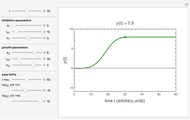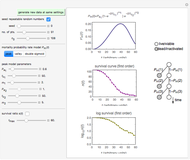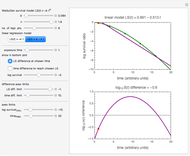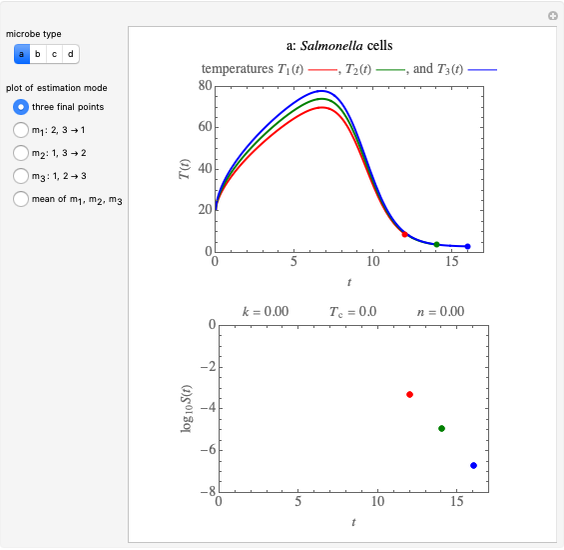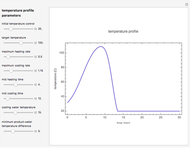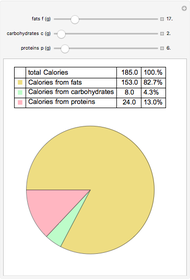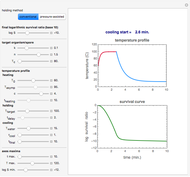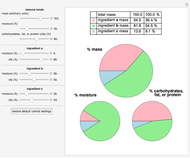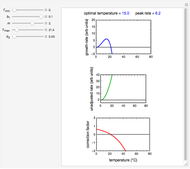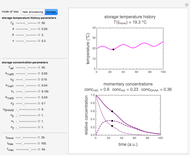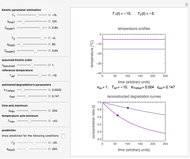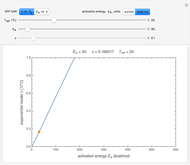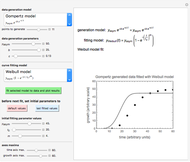Food Preservation Hurdle Technology

Requires a Wolfram Notebook System
Interact on desktop, mobile and cloud with the free Wolfram Player or other Wolfram Language products.
This Demonstration illustrates the principle of so-called "hurdle technology" in food preservation through an ideogram originally proposed by John Troller. The barriers to microbial growth, be they temperature, water activity, pH, antimicrobial chemical agents, and so on, are shown as stacked horizontal bars, and their combined effect as a vertical wall. When the wall's height equals the sum of the barriers' heights, their effect is merely additive. If the wall is taller than the sum, the barriers' effects are synergistic and if shorter, antagonistic.
Contributed by: Mark D. Normand and Micha Peleg (December 2013)
Open content licensed under CC BY-NC-SA
Snapshots
Details
Snapshot 1: strong synergism of two barriers
Snapshot 2: additive effect
Snapshot 3: mild antagonism
Snapshot 4: strong antagonism
Snapshot 5: single barrier at maximum intensity
Hurdle technology [1] refers to food preservation by the combined effects of barriers to microbial growth. The barriers can be heat treatment, cold storage, lowered water activity  ), lowered pH, the presence of salt, and added natural and/or synthetic antimicrobial chemical agents. Traditionally, the combined effect has been represented as a series of "hurdles" of different heights spaced horizontally as in a track-and-field competition, which spoilage or pathogenic microorganisms fail to pass over. According to John Troller [2, 3], it is more revealing to stack the hurdles on top of each other to create a wall that can be insurmountable to the target microbe(s). This Demonstration shows the principle with three hypothetical barriers whose heights you can vary with sliders. You can also vary the combined heights multiplied by a factor,
), lowered pH, the presence of salt, and added natural and/or synthetic antimicrobial chemical agents. Traditionally, the combined effect has been represented as a series of "hurdles" of different heights spaced horizontally as in a track-and-field competition, which spoilage or pathogenic microorganisms fail to pass over. According to John Troller [2, 3], it is more revealing to stack the hurdles on top of each other to create a wall that can be insurmountable to the target microbe(s). This Demonstration shows the principle with three hypothetical barriers whose heights you can vary with sliders. You can also vary the combined heights multiplied by a factor,  , (
, ( ), with a slider. When
), with a slider. When  the factors' effects are merely additive. When
the factors' effects are merely additive. When  the factors are synergistic, and when
the factors are synergistic, and when  they are antagonistic. Elimination of a factor can be done by setting its value to zero, the slider's minimum setting.
they are antagonistic. Elimination of a factor can be done by setting its value to zero, the slider's minimum setting.
References
[1] L. Leister and G. W. Gould, Hurdle Technologies, New York: Kluwer Academic/Plenum Publishers, 2002. doi:10.1007/978-1-4615-0743-7.
[2] J. A. Troller, Personal communication, 1983.
[3] Y. Dai, L. A. McLandsborough, J. Weiss, and M. Peleg, "Concentration and Application Order Effects of Sodium Benzoate and Eugenol Mixtures on the Growth Inhibition of Saccharomyces cerevisiae and Zygosaccharomyces Bailii," Journal of Food Science, 75(7), 2010 pp. 482–488. doi:10.1111/j.1750-3841.2010.01772.x.
Permanent Citation
"Food Preservation Hurdle Technology"
http://demonstrations.wolfram.com/FoodPreservationHurdleTechnology/
Wolfram Demonstrations Project
Published: December 13 2013







